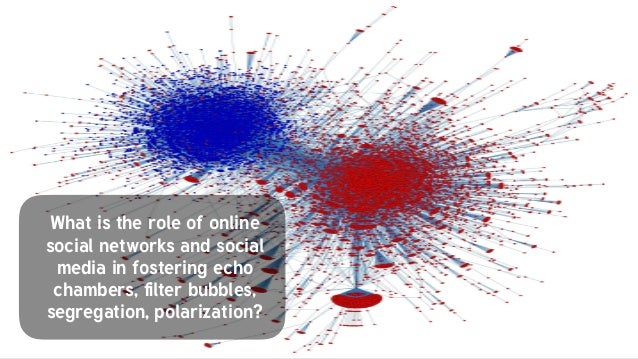Feb
2019
Sunstein’s Analysis and Social Media’s Polarization
When beginning to read Cass Sunstein’s article I was not surprised that Google values the idea that the news you are exposed to should mirror your interests, however I was surprised that many internet and news outlets have the option to personalize or customize what news/entertainment you receive. This creates communities of likeminded individuals amongst citizens without healthy exposure to opposing views. Based on two studies Sunstein creates a strong claim that when likeminded people talk about political/cultural issues their opinions on those issues become reinforced resulting in a more extremist viewpoint. This theory makes sense because as humans we feel more confident and assured around those who share similar beliefs. I agree that in order to strengthen democracy our society must participate in deliberation with those of differing opinions, but I feel that the solutions Sunstein presents will not solve the whole problem. Sunstein speaks on the topic of “political charity” which he describes as news corporations putting forth good faith and legitimatizing rival companies or those with opposing opinions. Although this is a concept that I would be in support of I just do not see it as realistic. Our media often mirrors our political climate and as stated by Steven Levitsky and David Ziblatt in “How Democracies Die” our democratic guardrail of mutual respect and legitimacy of opposing political opponents has eroded with the previous presidential election of Donald Trump. A large contribution to our polarizing climate is News outlets and Media sources that frame their content to appeal to the biases of their viewers/base, undermining their content and showing mutual respect for other outlets would simply be bad for business and not something I see many sources jumping on. Another solution he posed was creating more deliberative forums on the internet in which people can engage with others who have opposing beliefs. Although I think this is a valid proposal, we must not forget the internet has created filter bubbles that use algorithms to personalize the content one is exposed to, to reinforce their own beliefs/interests. Citizens today are simply not exposed to as many people with differing opinions due to these algorithms. Citizens would have to make the conscious effort to go to these internet forums and deliberate with others which would place them out of the comfort zone of the communities of likeminded people that the internet has created.
The Conversation’s article “How Social Media Fires People’s Passions and Builds Extremist Divisions” shows how social media fuels extremist positions through these communities. Based on their studies smartphones and web applications are increasing people’s passions while also driving them to polarizing extremes. The article explains how people use social media to communicate their need for things like money, attention, and prestige, but once they become a part of a social media platform, they start to search for wider audiences that share approval and interests. These communities further fuel the information they are exposed to therefor the majority of information they are seeing on social media is in support of their ideals. Then when people want to broaden out beyond their immediate social networks the most effective way to achieve mass appeal and converge is to turn to the extreme. We often see that the things/comments that go viral on the internet are the most outlandish extreme views. Sunstein’s theory is a legitimate concern, however the solutions to it are very difficult due to the complexity of social media and its drive within polarization.